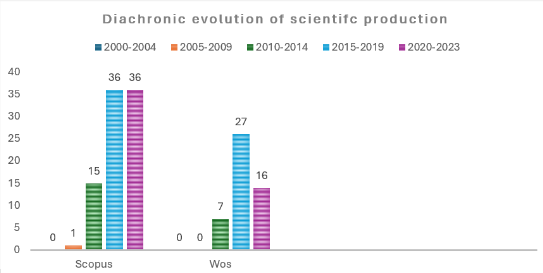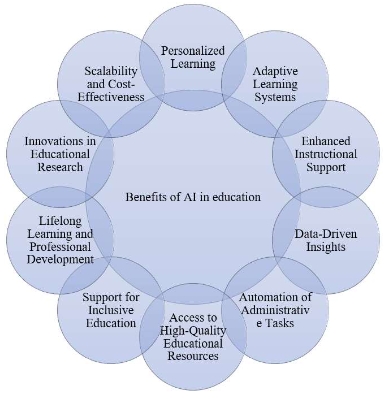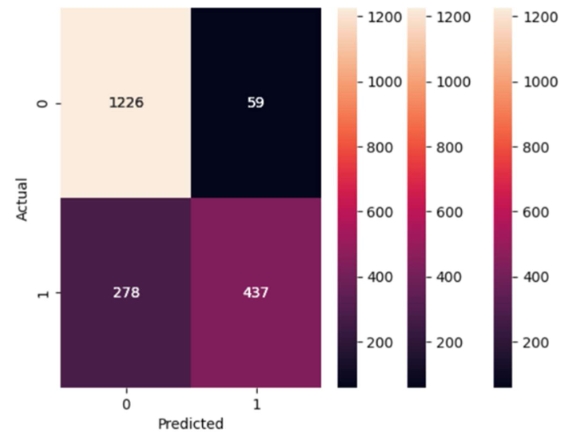Formation of readiness for the use of digital technologies in future qualified computer workers with hearing impairments
Abstract
The conducted research offers a model and system of electronic support for training students of professional educational institutions with special needs to use computer technologies. The proposed model will help prepare future teachers for studying computer disciplines in general. To implement research tasks, we build a model of an object, determine its structure and relationships with other objects and systems, and highlight its features and characteristics. The model reflects the requirements for training students of professional educational institutions in the specialty “primary education”, the assessment of the levels of readiness to use it in inclusive education, and diagnostic tools for determining the level of competence in ICT. The proposed model consists of four main blocks, which we will discuss in more detail. Due to the lack of a comprehensive approach to solving the most important social problem—creating equal opportunities for people with disabilities in all spheres of society, including in the field of education—a number of problems have emerged related to ensuring accessibility to the physical, social, economic, and cultural environment. To solve them, we must provide a differentiated individual package of support for the learning process in an integrated environment, taking into account the educational opportunities and needs of a student with special needs. The analysis of the results of the study confirmed the effectiveness of pedagogical conditions for preparing students of professional educational institutions with special needs for the use of CT in the process of studying computer disciplines based on an electronic textbook.
References
[1]Alekseyeva H, Antonenko O, Zhadan K, Lifenko M. Experience of using electronic learning tools in inclusive higher education institutions (Ukrainian). Physics and Mathematics Education: Scientific Journal 2018; 4(18): 17–25.
[2]Babych AI. Introduction of elements of inclusive education for students in Ukraine with hearing impairments (Ukrainian). In: Graduation Qualification Work of a Student of Advanced Training Courses for Scientific and Pedagogical Workers (Ukrainian). Kyiv National University of Technologies and Design; 2019.
[3]Zayerkova NV. Support for youth with special educational needs in higher education. In: Proceedings of the Conference “Professional Development of Specialists in the System of Adult Education: History, Theory, Technologies”; 19 April 2018; Kyiv, Ukraine. pp. 113–115.
[4]Babych AI, Kernesh VP. Introduction of elements of inclusive education for students of Ukraine with hearing impairment in Zvo. Available online: https://er.knutd.edu.ua/bitstream/123456789/17428/1/Innovatyka2020_P035-042.pdf (accessed on 13 December 2023).
[5]Gladush VA. Republican educational-methodical cabinet of special schools: History, achievements (Ukrainian). Scientific Journal of NPU Named after M.P. Dragomanov, Series 19: Correctional Pedagogy and Special Psychology 2012; 21: 46–51.
[6]Karakai OS, Voloboev VO, Grishin VS, et al. Features of obtaining technical higher education by individuals with hearing impairments and their employment (Ukrainian). Theory and Practice of Metallurgy 2021; 5: 73–80.
[7]Yezhova TY. Formation and Development of the System of Vocational Education for Individuals with Hearing Impairments in Ukraine (Ukrainian) [PhD thesis]. Institute of Special Pedagogy of the Academy of Pedagogical Sciences of Ukraine; 2006.
[8]Berezovska I, Minakova KO. Study guide for teachers of natural sciences and technical disciplines (Ukrainian). Available online: https://repository.kpi.kharkov.ua/server/api/core/bitstreams/703eb88c-48b8-4258-bc04-d6c135153f60/content (accessed on 13 December 2023).
[9]Protsyk IS, Kara NI. Problems of improving the quality of social services in the process of deepening international cooperation between domestic and Polish enterprises. Management and Entrepreneurship in Ukraine: The Stages of Formation and Problems of Development 2021; 3(2): 241–247. doi: 10.23939/smeu2021.02.240
[10]Gorbunova IB. Music computer technologies in the perspective of digital humanities, arts, and researches. Opción: Revista de Ciencias Humanas y Sociales 2019; 24: 360–375.
[11]Kovalenko O. Features of organizing the educational process in an inclusive class. Higher Education in Ukraine 2023; 2: 70–79.
[12]Grytsenok LI. Psychological readiness of the pedagogical community and the public for the implementation of educational innovations. In: Proceedings of the II All-Ukrainian conference with International Participation “Psychological Dimensions of Personal Interaction of Subjects of the Educational Space in the Context of the Humanistic Paradigm”; 21 March 2019; Kyiv, Ukraine. pp. 241–249.
[13]Yesina V, Shyrobova O, Malovychko O. Ukrainian model of implementing inclusive education (Ukrainian). Bulletin of Luhansk National University Named After Taras Shevchenko. Pedagogical Sciences 2021; 2(340): 287–297.
[14]Hurenko OI, Alekseeva HM, Lopatina HO, Kravchenko NV. Use of computer typhlotecnologies and typhlodevices in inclusive educational space of university. Information Technologies and Learning Tools 2017; 61(5): 61–75. doi: 10.33407/ITLT.V61I5.1782
[15]Grebenyuk TM. Social and Psychological Adaptation of the Disabled with Visual Impairments to Education in Higher Educational Institutions (Ukrainian) [PhD thesis]. National Pedagogical University Named by M.P. Draghomanova; 2008.
[16]Reisdorf B, Rhinesmith C. Digital inclusion as a core component of social inclusion. Social Inclusion 2020; 8(2): 132–137. doi: 10.17645/si.v8i2.3184
[17]Davydenko HV. Theoretical and Methodological Foundations for Organizing Inclusive Education in Higher Education Institutions of European Union Countries (Ukrainian) [PhD thesis]. Ukrainian Academy of Political Sciences; 2015.
[18]Voznyuk OM. Preparedness of educational workers in general secondary education institutions for the implementation of inclusive education (Ukrainian). Available online: http://imso.zippo.net.ua/wp-content/uploads/2017/12/12_voznyuk.pdf (accessed on 15 December 2023).
[19]Alieksieieva H, Cortez HI. Use of electronic learning tools in the conditions of higher education institution inclusion. Scientific Foundations for Training Specialists in Natural, Engineering-Pedagogical, and Technological Directions 2019; 145–148.
[20]Baumuratova D, Serik M. Improving the content of technical and professional education through the inclusion of cloud solutions. Global Journal of Engineering Education 2021; 23(3): 259–264.
[21]Hoffmann AL. Terms of inclusion: Data, discourse, violence. New Media & Society 2021; 23(12): 3539–3556. doi: 10.1177/1461444820958725
[22]Kolupaeva AA, Taranchenko OM. Inclusive Education: From Basics to Practice: A Monograph (Ukrainian). TOV “ATOPOL”; 2016. p. 152.
[23]Makhura TM, Collins GW, Segabutla H, Cekiso M. Students’ perceptions of the inclusion of the English Word Power programme at one university in South Africa. Literator 2021; 42(1): 1–11. doi: 10.4102/lit.v42i1.1709
[24]Yang SM. Educators’ Perceptions on Students with Disabilities, Inclusion and Instructional Technology after COVID-19 [PhD thesis]. Trident University International; 2021.
[25]Stasiuk LP. Inclusive education in general education schools: An integrative approach to inclusive education for individuals with visual impairments (Ukrainian). In: Tulashvili YJ (editor). Monograph (Ukrainian). PP Ivanyuk V.P.; 2019. pp.178–193.
Copyright (c) 2023 Hanna Alieksieieva

This work is licensed under a Creative Commons Attribution 4.0 International License.









